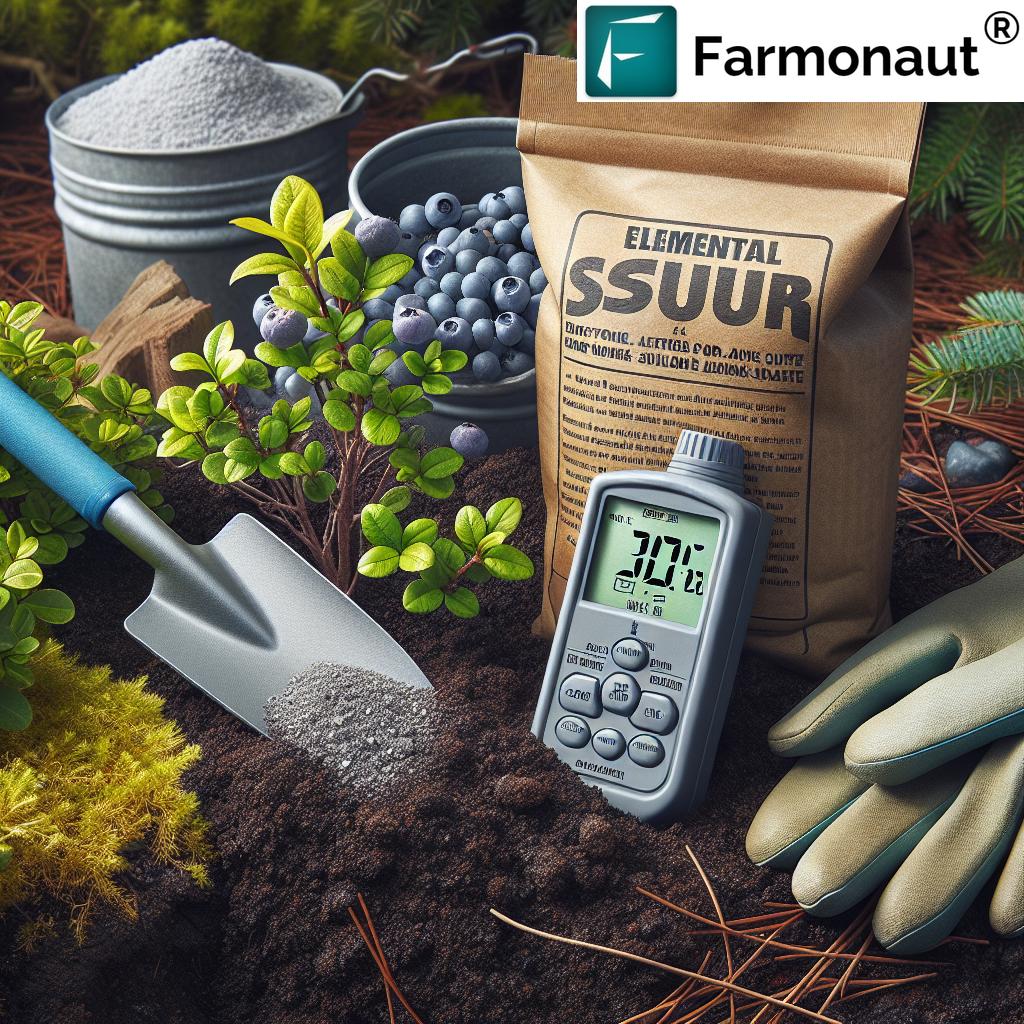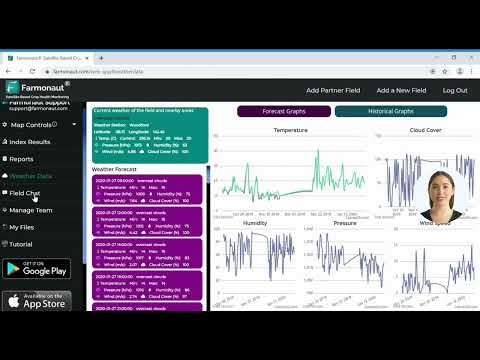How to Make Soil More Acidic: 7 Shocking Secrets!
“Blueberries thrive best in soil with a pH between 4.5 and 5.5—much more acidic than most garden plants!”
Learn how to acidify soil effectively for acid-loving plants, with step-by-step methods, best soil amendments, and tips on monitoring pH levels for optimal plant health.
Understanding Soil pH
As growers and stewards of healthy soils, it’s crucial that we understand soil pH—a measure of hydrogen ion concentration reflecting the acidity or alkalinity of our soils. This seemingly simple metric has profound implications for plant nutrient availability, microbial activity, and overall plant vitality.
- pH is measured on a scale of 0 to 14. A pH less than 7.0 is considered acidic soil, while a pH above 7.0 indicates alkalinity.
- Most plants thrive in neutral to slightly acidic soil conditions (pH 6.0–7.0), but blueberries, azaleas, and other acid-loving crops demand a considerably lower pH for optimal growth and yield.
- The recommended pH for blueberries and azaleas is typically in the 4.5–5.5 range.
Soil pH impacts the solubility and uptake of essential nutrients such as iron, manganese, phosphorus, and more. The resulting availability directly affects plant health and productivity.
Regular soil pH testing and monitoring is essential for us to determine the current pH value, track changes over time, and take timely corrective actions.
Importance of Acidic Soil for Plant Health
Many crops have evolved to utilize the specific chemistry of acidic soils. Why does acidifying soil matter so much? Here’s what happens when we create acidic conditions for certain crops:
- Increased Nutrient Availability: Acidic pH increases the availability of nutrients like iron and manganese—vital for chlorophyll formation and photosynthesis.
- Healthier Microbial Activity: The right acidity supports beneficial bacteria and fungi that transform organic matter and unlock essential plant nutrients.
- Reduced Disease Risk: Acid-loving plants often show higher resistance in lower pH environments, where soil-borne pathogens are less active.
- Optimal Growth: When we acidify soil appropriately, our plants thrive, putting more energy into blooming, fruiting, and developing deep, healthy roots.
For us to effectively optimize plant health and increase yields, especially for crops like blueberries and azaleas, ensuring the soil is acidic enough is essential.
Soil pH Testing and Monitoring Methods
Before jumping into how to acidify soil, let’s discuss the crucial step of soil pH testing and monitoring. Accurate knowledge of your soil’s current pH is foundational for determining which amendments to use, at what rates, and how long to wait for results.
How Do We Test Soil pH?
- Soil Test Kits: Readily available for home use; involve mixing soil samples with chemical solutions or pH test strips.
- Electronic pH Meters: Portable and reusable meters provide quick, digital readings. Best for regular monitoring.
- Lab Soil Analysis: Sending samples to an agricultural laboratory offers the most accurate picture, including nutrient availability and potential imbalances.
Tip: Collect soil samples from 4–6 inches below the surface. Test in multiple spots across your garden and average the results. Test at least annually, or more often when making pH adjustments.
If you want to manage your soil health and pH at a larger scale or over time, it’s wise to combine testing with remote monitoring technologies. Farmonaut provides advanced solutions for crop health monitoring, using satellite data to evaluate soil, plant growth, and environmental trends easily, even over extensive farmland.
Learn about Farmonaut’s Carbon Footprinting for sustainability guidance and tracking your environmental impact in agriculture.
How to Acidify Soil: 7 Shocking Secrets!
If you’re seeking to lower soil pH for plants, whether for a blueberry patch, azalea bed, or an entire field, these research-backed methods will guide you from alkalinity or neutral to optimally acidic soil again—even for the most challenging conditions.
“Adding just 1 pound of elemental sulfur can lower soil pH by one unit in 100 square feet.”
1. Elemental Sulfur Application for Soil
The gold-standard for acidifying soil is the elemental sulfur application for soil. When we apply elemental sulfur, soil bacteria convert it into sulfuric acid. This process gradually lowers pH through increased hydrogen ion concentration, transforming alkaline or neutral soils into ideal acidic conditions.
- Time Frame: The transformation is slow, requiring months to up to a year depending on soil temperature, microbial activity, moisture, and current soil chemistry.
- Application Timing: Fall or early summer is best for pre-planting, giving time for sulfur to react.
- Application Rate Example: To decrease pH by 1 unit in silty clay loams, 1,500 pounds per acre may be needed. For gardens, roughly 1 pound per 100 square feet is effective.
- Result: Safely targets a gradual decrease in soil pH—perfect for prepping acidic beds for blueberries or azaleas.
Caution: Too much sulfur may over-acidify. Testing and monitoring post-application is essential for the best plant health outcomes.
2. Using Iron Sulfate to Acidify Soil
If you want results faster than sulfur alone, iron sulfate is your ally. Iron sulfate reacts with moisture, producing both iron (a key micronutrient) and sulfuric acid to lower soil pH for plants.
- Speed: Results appear within three to four weeks—much faster than elemental sulfur.
- Dual Benefits: Also provides iron for plants, useful for iron deficiency (common in high-pH soils).
- Recommended Application Rate: Requires higher rates than sulfur (about six times as much).
- Consideration: Overuse can risk iron toxicity; so, repeated monitoring is key.
3. Ammonium-Based Fertilizers
Many ammonium-based fertilizers (like ammonium sulfate and ammonium nitrate) acidify soil while supplying essential nitrogen for plant growth. When we apply these fertilizers, soil bacteria convert ammonium to nitrate, releasing hydrogen ions and lowering soil pH.
- Timing: Apply during active plant growth for maximal benefit.
- Monitoring and Balance: Excessive use can lead to over-acidification and nutrient imbalances.
- Application Advice: Follow recommended rates for your specific crop and soil type. Regularly monitor the soil for pH and nitrogen status.
Fertilizer choice is especially critical if you’re managing crop yield at scale, where resource efficiency is crucial. Using AI-based advisory tools such as Farmonaut’s Jeevn AI can boost your decision making with real-time recommendations for fertilizer application and crop management.
4. Organic Methods to Acidify Soil
For those preferring a more natural approach or seeking to complement other methods, several organic amendments can acidify soil naturally and provide additional soil health benefits.
- Pine Needles: As pine needles decompose, they gradually release acidic compounds into the soil. Applying a 2–3 inch layer as mulch is effective around acid-loving plants like rhododendrons and blueberries.
- Sphagnum Peat Moss: Naturally acidic and excellent for mixing into planting beds or potting soil. It improves water retention, aeration, and structure but should be used judiciously due to environmental impact from peat harvesting.
- Coffee Grounds: Used coffee grounds are mildly acidic and provide a gentle pH reduction while boosting organic matter. Add sparingly to avoid potential nitrogen imbalances.
These organic methods to acidify soil often work best for maintenance of acidity rather than rapid pH changes.
Interested in custom soil/plant data? Access Farmonaut’s Satellite and Weather Data API for integration in advanced monitoring systems.
Explore API Developer Docs Here.
5. Aluminum Sulfate: Fast Acting
Aluminum sulfate is sometimes used for rapid pH reduction. When applied, it instantly reacts with moisture, converting to aluminum hydroxide and sulfuric acid. However, it is not without risks:
- Speed: Acts quickly—pH reduces within weeks.
- Risks: Over-application may result in aluminum toxicity, potentially harming plant roots and beneficial soil organisms.
- Best Use: Hydrangeas (for altering flower color) and situations where immediate results are critical—but not for ongoing, broad-scale acidification.
Always apply in recommended rates and only if other alternatives are not possible. Monitor soil post-application for any negative effects.
6. Adjusting Irrigation Water pH
In regions with high-pH or alkaline groundwater, irrigating with untreated water can raise soil pH over time. By acidifying irrigation water—with citric acid, sulfuric acid, or other approved agents—we help maintain and reinforce soil acidity:
- Useful in greenhouses, high-value crops, or where water quality is an ongoing concern.
- Test water regularly and adjust acidifying agent to achieve the desired pH for optimal nutrient uptake.
- Use drip irrigation or controlled application to minimize environmental impact.
7. Strategic Crop Selection & Companion Planting
Sometimes the most sustainable move is to select crops that already prefer acidic soils. Blueberries, azaleas, rhododendrons, and camellias thrive where fewer interventions are needed. Companion planting—grouping acid-lovers together—creates natural acidic microenvironments, reducing the need for continuous amendments.
- Planting acid-loving species together helps maintain the right soil conditions and protects them from nearby alkaline-demanding plants.
- Use mulches and organic matter specific to the plant community.
“Adding just 1 pound of elemental sulfur can lower soil pH by one unit in 100 square feet.”
Soil Acidification Methods Comparison Table
To help you select the best soil amendments for acidic soil, here is a comprehensive table comparing the methods, application rates, speed, suitability, and estimated cost.
| Method | Estimated pH Change Range | Speed of Results | Best For (Plant Types) | Application Rate (grams/m2) | Estimated Cost ($/m2) |
|---|---|---|---|---|---|
| Elemental Sulfur | Lowers pH by 1–2 units | Slow (several months – 1 year) | Blueberries, Azaleas, Rhododendrons | 10–50 | 0.5–1.5 |
| Iron Sulfate | Lowers pH by 1 unit | Moderate (3–4 weeks) | Acid-loving ornamentals; iron-deficient crops | 50–120 | 2.0–3.5 |
| Ammonium Sulfate/Nitrate Fertilizers | Lowers pH ~0.5–1.5 units (over time with regular use) | Moderate to Slow (weeks to months) | All crops needing extra N; acidifying maintenance | 20–80 | 0.8–2.0 |
| Sphagnum Peat Moss | Lowers pH by 0.5–1 unit | Moderate (weeks – few months) | Container plants; garden beds of azaleas/blueberries | 100–250 (as amendment; not mulch) | 2.0–5.0 |
| Pine Needles Mulch | Maintains existing acidity; slight decrease | Slow (months–years) | Maintaining beds of acid-loving plants | Mulch: 10–25 (as top-dress) | 0.0–1.5 |
| Coffee Grounds | Slight pH decrease | Slow (months) | Maintenance/top-dressing for ornamentals and veggies | Sparingly (5–8 per plant monthly) | 0.0 (free if from home use) |
| Aluminum Sulfate | Lowers pH by 1+ units (rapid effect) | Fast (weeks) | Hydrangeas (flower color), urgent pH drops | 50–120 | 2.5–4.0 |
Managing Soil Acidity for Blueberries and Azaleas
Blueberries and azaleas represent ultimate acid-lovers, thriving with a soil pH between 4.5 and 5.5. Achieving these ranges requires more than a one-off amendment—think about the overall system:
- Prior to Planting: Use elemental sulfur application for soil several months ahead, incorporating it into the top 6–8 inches of soil.
- During Growth: Supplement with acidic organic materials (peat moss, pine needles) and fertilize with ammonium-based nitrogen sources.
- Maintenance: Test soil pH regularly (at least twice a year). As plants mature, top dress annually with pine needle mulch or sphagnum peat moss.
- Watering: Avoid alkaline irrigation water. Adjust water pH as necessary.
Pro tip: Yellow leaves on blueberries often signal iron deficiency from high pH. Test quickly and consider iron sulfate to both lower pH and supply iron.
Considerations and Best Practices When Acidifying Soil
- Soil Testing: Always test soil pH before and after applying amendments. Each method’s effectiveness depends on initial pH, soil type and the desired outcome.
- Right Time, Right Conditions: Most acidification processes benefit from warm, moist soils due to increased microbial activity converting amendments into usable forms.
- Regular Monitoring: Monitor pH regularly—at least every season—as pH can drift with rainfall, irrigation, and ongoing fertilization.
- Choose the Right Amendment: Match methods to crop needs (elemental sulfur for broad establishment, iron sulfate for rapid correction and added micronutrient, organic methods for maintenance).
- Be Mindful of Environmental Impact: Excessive use of chemical acidifiers can harm soil organisms, pollute water sources, and disrupt nutrient balances.
- Rotate Crops and Amendments: Long-term soil health depends on alternating amendment strategies and plant rotations for resilience.
- Document and Adjust: Keep a log of all applications, weather, crop yields, and visual plant health changes for continuous improvement year over year.
Soil Health Monitoring With Farmonaut
With the growing demand for sustainable, data-driven agriculture, digital tools make a world of difference—especially if you’re managing crops or soil at scale, or need remote, ongoing assessment. Here’s how Farmonaut supports soil health management:
- Satellite-based Crop Health Monitoring: Track soil moisture, vegetation health (NDVI), and see the effects of soil amendments over time.
- AI-based Jeevn Advisory System: Receive custom, real-time advice on nutrient scheduling, amendment applications, and risk reduction.
- Resource Management Tools: Plan, time, and document acidifying activities and see their impact via intuitive dashboards.
Accessible on Android, iOS, and web, Farmonaut’s platform gives everyone from smallholder farmers to professional agronomists the power to manage soil pH, amendment impact, and plant health more efficiently—and more affordably—than ever before.
Farmonaut Subscriptions and Pricing
FAQ: How to Make Soil More Acidic
-
Why do some plants like blueberries and azaleas need acidic soil?
These plants evolved to maximize iron and manganese uptake in acidic conditions (pH 4.5–5.5). Outside this range, their roots struggle to absorb key nutrients, leading to poor growth and yellowing leaves. -
How often should I apply amendments to maintain acidic soil?
Major soil acidification (such as with sulfur) is often a one-time or rare application. Maintenance with organic materials (pine needles or peat moss) should be done annually. Always retest soil pH before and after interventions. -
Is it safe to use aluminum sulfate in my garden?
Aluminum sulfate is effective but should be used cautiously, as too much can harm plants and soil organisms. It’s best reserved for specialty uses like hydrangea color changes. -
Can I use homemade compost to acidify soil?
Compost’s pH is typically near neutral, though adding acidic ingredients (like pine needles) can slightly lower its pH over time. For major pH adjustments, compost alone is not sufficient. -
Does rainwater acidify soil?
Most rainwater is slightly acidic (pH 5.5–6.0), which can help in maintaining but not dramatically lowering soil pH. Long-term, it supports acid-loving crops if used as the main irrigation source. -
Will acidifying soil harm beneficial organisms?
Maintaining the correct pH for your crop won’t harm beneficial soil organisms. However, sudden, large pH swings (especially from overuse of chemicals) can disrupt the microbial ecosystem, so always aim for gradual change. -
How do I test for successful acidification?
Use a reliable pH meter or test kit. Visual plant clues (leaf color, vigor) and tracking yields over time also indicate success.
Conclusion
Acidifying soil isn’t just about adding amendments—it’s an integrated, science-based approach that considers the unique soil, plant, and environmental context. By understanding how to acidify soil, regularly testing, and choosing the most effective soil amendments, we empower our acid-loving crops, from blueberries to azaleas, to reach their full yield potential.
Whether you’re a home gardener managing a small azalea bed, or a commercial farmer optimizing vast fields, the best results come from combining methodical soil pH testing, strategic amendment application, and continuous monitoring. With technology like Farmonaut’s satellite and AI-driven systems, tracking progress and maintaining optimal soil conditions is easier, more accurate, and accessible to all.
Let’s embrace these 7 shocking secrets and cultivate thriving, healthy, and productive acid-loving gardens and farms worldwide—while practicing mindful, sustainable soil amendment techniques.
Ready to take your soil health and farm management to the next level?
Try Farmonaut’s data-driven crop and soil monitoring solutions today!






















